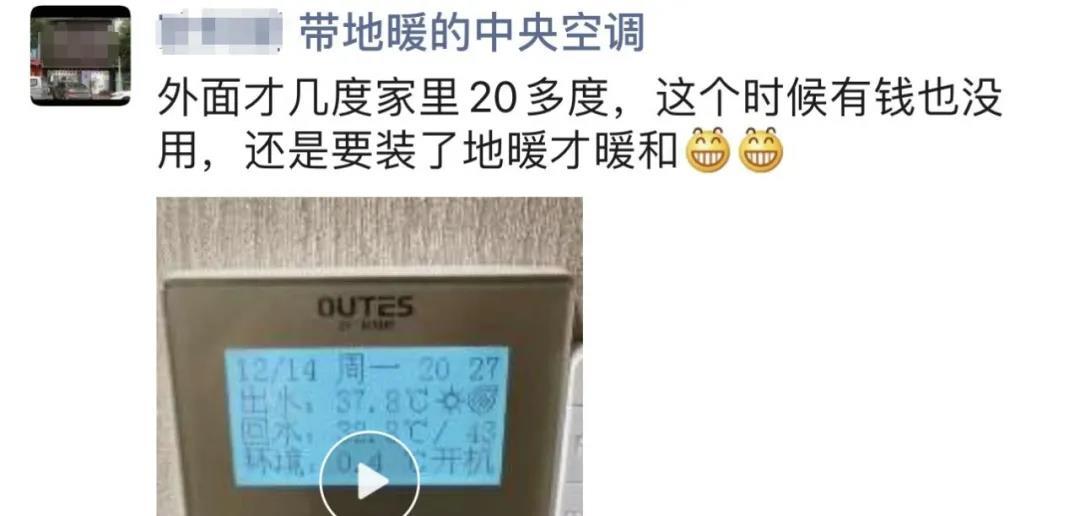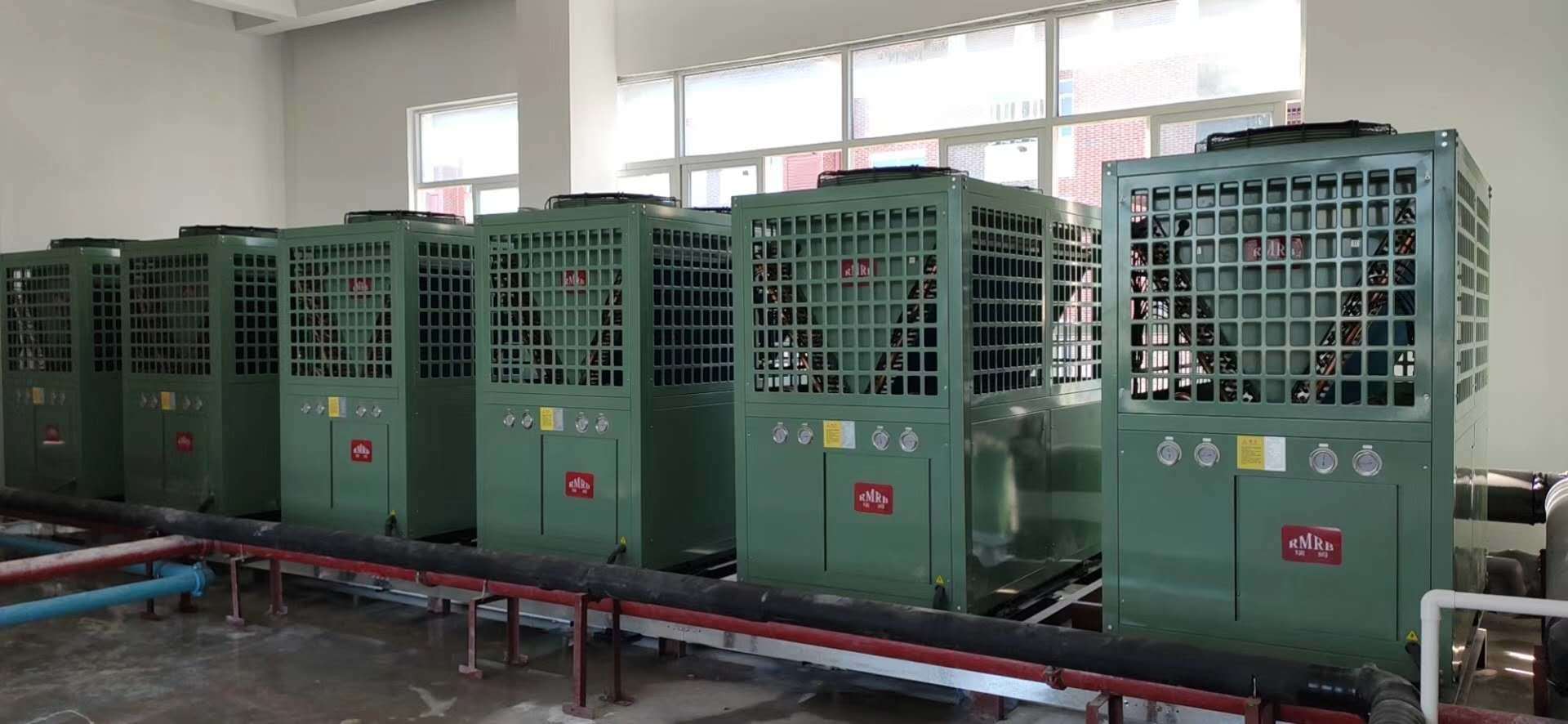Friendly reminder from air source heat pump heating : the strongest cold current is coming! The minimum drop was 16 degrees! The once-in-a-century New Year’s Eve cold snap hit on December 28th. The traditional heating and cooling air conditioner’s heating function is attenuated by 30-50% when it reaches zero degrees. Below -5°C, the heating function of ordinary air conditioners basically fails. It’s not that the air conditioner is broken! Please be mentally prepared in advance!

﹣7℃ is the lower limit of heating for ordinary air conditioners
Ordinary air conditioners, whether they are early window units, on-hook units, or the current higher-end fluorine system central air conditioners, have a prominent feature in heating: the colder the weather, the worse the heating effect of the air conditioner. This is mainly because the outdoor temperature is low, and the heat exchange temperature difference between the outdoor unit heat exchanger (that is, the condenser) and the air becomes smaller, which drastically reduces the heat exchange that can be transferred to the room!

According to media reports, when the outdoor temperature is 0°C to -4°C, the heating effect of ordinary household air conditioners is about 70% of the nominal heating capacity (design heating capacity), and -5°C to -6°C is about half of the nominal heating capacity. 40%, it needs to consume a lot of electric heating for heating, so the power consumption will increase exponentially, and the heating effect is still poor. And below -7 ℃, the air conditioner heating has almost no effect. Therefore need to adopt other heating equipment.
If you defrost frequently, it may also cause the wind to be hot and cold!

Low temperature air source heat pump heating is reliable
The air source heat pump consumes very little electricity, absorbs a large amount of low-temperature heat energy in the air, and converts it into high-temperature heat energy through compression by a compressor, and transfers heat to water during the heating process. Even in a low-temperature environment, the heat is transmitted to the room through hot water or hot air circulation, and the constant temperature is controlled at 18°C to 20°C, which meets the national heating standard.

Air source heat pumps have wide adaptability and can be used in environments above -25°C. At an ambient temperature with an average temperature of -5°C, more than 3 portions of heat can be generated for every 1 portion of electricity consumed, and the energy-saving benefit can reach 75%. In an environment with an average temperature of -15°C, 1 portion of electricity consumed can also generate 2 More than a serving of calories!
1) Low temperature condition: ﹣25℃ VS ﹣7℃
Air source heat pump heaters and heating and cooling air conditioners can both cool and heat, but the difference in heating conditions between the two is still very large, which is one of the most important differences between the two. The almost similar appearance of the two also makes many users have doubts-"Isn't this just an air conditioner? In fact, the two are not a product at all.
The latest national standards for low ambient temperature air source heat pumps are GB/T 25127.1-2020 and GB/T 25127.2-2020, which require the equipment to be capable of normal heating at ambient temperatures not lower than -25°C. Ordinary household air conditioners implement the national standard GBT 7725-2004, the nominal heating condition is outdoor dry/wet bulb temperature 7°C/6°C, the low-temperature heating condition is outdoor 2°C/1°C, and the ultra-low temperature heating condition is- 7°C/-8°C.
From the low temperature working conditions of the two, it can be seen that the low temperature air source heat pump can work in a lower climate environment, and can generally adapt to areas where heating is just needed, such as North China, Northwest China, and East China, while the working range of low temperature heating and cooling air conditioners is -7 ℃~43℃, the working range is much smaller.
2) Design focus: focus on heating VS focus on cooling
From the point of view of product design, the low-temperature air source heat pump focuses on heating, that is, the heating effect. as high as possible. According to the current standard, the heating energy efficiency requires that the heating energy efficiency COP≥2.4 at the ambient temperature of -12°C; the heating energy efficiency COP≥2.0 at -20°C. Traditional air conditioners are based on refrigeration and have a heating function, which cannot meet the requirements of this standard.
The low-temperature air source heat pump is designed with the technology of supplementing air to increase enthalpy, which can improve the heating performance of the system at a lower ambient temperature, and meet our requirements of non-attenuation of heating and energy efficiency.
In addition, the product design focus is on the defrosting technology of the equipment. According to the requirements, the air supply temperature of the internal unit should not be lower than 1min at a time lower than 18°C; in addition, the stability of operation, the convenience of operation, installation and after-sales There are requirements above.
3) Parts: air injection enthalpy frequency conversion compressor VS ordinary compressor
Low-temperature air source heat pumps mainly focus on heating in the north. The products can operate normally at -25°C, and heating at -12°C has no attenuation; ordinary air conditioners are mainly for cooling, and the application area is mainly in the areas south of the Yellow River.

Different working environments have differences in parts and components. As for the most critical core component, the compressor, the air conditioner uses a common compressor, and the heat pump uses a compressor with air jet enthalpy increase or two-stage compression.
The main reason is that in places where heating is required in the north, the ambient temperature is generally lower than -7°C, and in some places it is even lower. The heating capacity of an air conditioner using a common compressor not only drops sharply at -5°C, but also causes the compression ratio of the compressor to increase. Too large, greatly increasing the risk of compressor damage.
Therefore, when the ambient temperature is below -7°C, the cold and hot air conditioners basically rely on electric heating to operate, which is difficult to meet the heating needs of northern regions; compressors with air jet enthalpy increase or two-stage compression can achieve stability under low temperature conditions Heating, even at an ambient temperature of -12°C, can also achieve heating without attenuation.
4) Air source heat pumps are divided into hot water type VS hot air type
The air source heat pump heating currently promoted in rural areas is mainly divided into two forms:
The first type is an air source heat pump hot water system for each household. Use a heat pump to produce hot water, and then circulate the hot water through the floor heating pipes or radiators in the room to achieve heating. Due to the good thermal insulation performance of the building, even if the machine is shut down for more than 10 hours in this way, the indoor temperature fluctuation is extremely small, and good heating comfort can be maintained.

The second type is an air source heat pump fan for each room. The heat pump air blower directly sends hot air to the room, and the required heating effect can be achieved in only ten minutes after starting, so it is suitable for intermittent heating. At present, the living characteristics of most rural residents in our country are that the elderly and children live at home all year round, and the whole family reunite on weekends and holidays. There are multiple rooms in each household, usually only one or two are used, and they are all used during reunions. Therefore, the air source heat pump fan can efficiently realize intermittent heating, and it is also one of the excellent ways of clean heating in rural areas.
Summary: Air source heat pump heaters are born for low temperature heating
Generally speaking, the difference between low-temperature air source heat pumps and traditional air conditioners is quite obvious. The biggest advantage of the heat pump lies in its better heating performance, which can operate stably at a low temperature of -35°C, and also has high heating energy efficiency. It can be said that the air source heat pump heater is born for low temperature heating!








